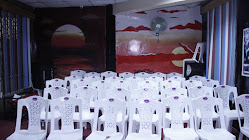Integrating terror group fighters who return home is hard but possible
May. 08, 2017, 3:00 pm
By THE CONVERSATION
Thousands of
youths have been recruited by terrorist groups from Africa, the Middle East,
Europe, Asia and America. Between 2011 and 2016 the number of “foreign fighters” rose to
more than 42,000 – among them 5000 Westerners and close to 7000 North Africans. They had travelled to the
Middle East to join jihadist organisations such as the so-called “Islamic
State” (IS) and the Syrian Fateh al-Sham Front (ex-Al-Nusra), a former al Qaeda
affiliate. 
By early 2016,
almost a third of these foreign fighters had returned to their countries of origin. Now that IS is suffering
serious military setbacks, the flow of foreign fighters seems to have dwindled.
More returnees can be expected to follow in the near future.
In North
Africa, hundreds of men and women who joined IS or Fateh al-Sham Front have returned
home with combat experience. They pose a major security threat to the region.
At least 400 Tunisians have, so far, returned to
the country. Authorities are concerned they could be coordinating new attacks
with terrorist networks.
These fears are
not without foundation. Terrorist groups like IS continue to encourage those
within Europe and Africa (whether returnees or supporters) to carry out attacks from their home nations.
So how should
governments manage these returnees? It’s not an easy question to answer but accounts of returnees provide some insights. What’s
clear is that there are many facets of radicalised youth – and that there’s no
single solution to eradicate this social evil.
What the
available evidence suggests is that governments must respond realistically to a
complex problem. And they need to accept that opting for the reintegration of
(former) terrorists to minimise the possibilities of future violence is not
adopting a soft approach. Realistically, it’s the only approach.
Refugees and migrants
are not terrorists
The fear of
further attacks has driven the media to draw a link between anti-terror
measures and immigration policy that is “analytically and statistically
unfounded, and must change”, according to Ben Emmerson, the UN’s Special
Rapporteur on counter-terrorism and human rights.
The report
recommends that countries should realise the vast majority of Syrian refugees
and others are victims of terrorism. They must not be regarded as potential
suspects. It also calls on states to respect migrants’ fundamental rights and
warns that attempts to snub asylum seekers or detain migrants are a violation
of human rights and international refugee law. Emmerson warned that operations
to stop migration may also increase the risk of attacks in Europe.
This suggests
the vital need for strategies that address issues of migration and refugees,
and the risks that returning foreign fighters may pose.
Unlike refugees
or migrants, foreign fighters returning from the conflict in Syria and Iraq are
a serious security threat at home and internationally. While in the war zone,
they joined terrorist networks, adopted techniques like suicide bombings and
beheadings, and set up ties with other jihadists around the globe.
Different
countries have different mitigating factors that limit the danger. The presence
of tough and focused security services is particularly important. Several
countries in Africa and Europe have developed an individual risk management and
analysis for returnees. These people are categorised according to the duration
they spent in the war zone, what they did there and their goal after their
return.
Criminal trials
are favoured in most European and African countries for dealing with returnees.
But trials don’t usually result in convictions; evidence against the returnees
is often lacking.
This shows the
critical need for a comprehensive approach that gets local authorities and
social partners involved. These could include, for example, Child Protection Services,
Social Services and the health sector.
Strategies to combat
the risks
North African
nations must decide how to handle returnees.
Tunisia has
around 2,400. The country has poor rehabilitation processes and policies in place.
Morocco had an estimated 1,500 citizens fighting in Syria and Iraq
as of October 2015. Some returnees have been jailed, but the country still
needs to develop an effective strategy to deal with others.
Some decision
makers seem to feel that returnees will always be terrorists who present a
permanent threat to national security. But a dialogue is necessary with the
returnees. They must be retrained and reintegrated into their own societies.
To make
reintergration feasible, the government must take an all-inclusive approach.
This would entail including returnees’ families, neighbourhoods and local
communities in the process. It also requires partnership with government,
schools, universities, civil society organisations, and the private sector.
Deradicalisation and
reintegration
The
deradicalisation of (former) terrorists or extremists can be viewed as a
process geared at ensuring their reintegration into society in a way that
minimises the chances they will resort to terrorism-related activity.
Reintegration
plans must therefore be flexible and tailored to an individual’s specific
background and motives.
The
deradicalisation programme, which combines education with anti-violence
training, is an attempt to disentangle the individual’s sense of hatred from
his or her political vision of the world and address both the motives behind
their hate sentiments. It also aims to reintroduce them to democratic values
and peaceful ways of expressing their feelings and viewpoints.
Numerous reintegration programmes are already
underway in Tunisia, Morocco, and many European countries. Most cover a range
of activities such as religious and psychological counselling, vocational
skills training, education and recreation.
Reintegration
programmes should include both deradicalisation and disengagement-based
efforts. Deradicalisation, which emphasises erasing violent ideologies from
extremists’ minds, is very crucial. But it should be considered one of many
possible options through which to limit the possibilities of recidivism.
In this context
information sharing, as well as social media monitoring relevant to conflict
zones, is of paramount importance.
More research
initiatives should be carried out in close cooperation with policy makers and
experts. This will enable the successful reintegration of terrorists and
extremists in society.
Finally, there
is a need for an optimistic environment to send a clear message of hope to
migrants, refugees, youth and communities. Governments should continue building
relations with them, gaining their trust – and deriving intelligence.
Moha Ennaji, Professor of Linguistics, Gender,
and Cultural Studies, International Institute for Languages and Cultures
This article
was originally published on The Conversation. Read the original article.
Subscribe to:
Post Comments
(
Atom
)


















No comments :
Post a Comment